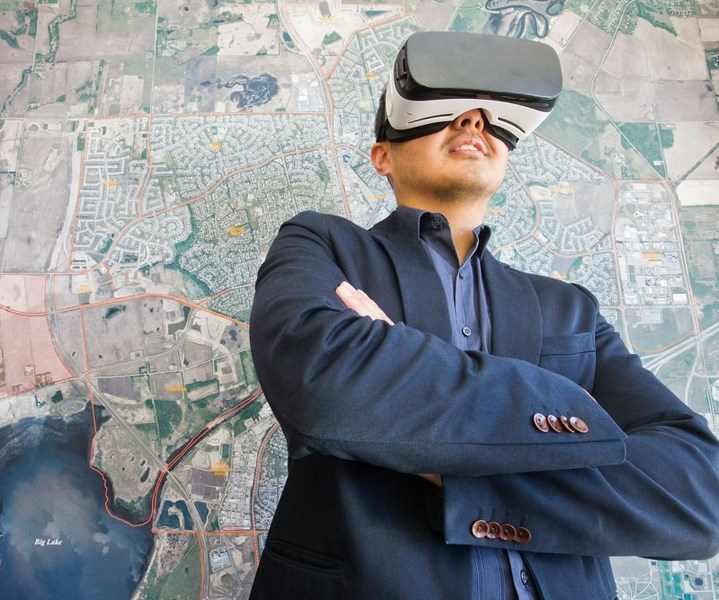I rode the LRT through St. Albert on Thursday.
Actual light rapid transit rail isn’t expected to be rolling through St. Albert for 20 to 30 years. But thanks to some virtual reality goggles and a nifty video, there is now a way to ride a 3D rendering of the proposed line that is expected to run the southern boundaries of St. Albert to the north area via the St. Albert Trail.
As you ride the train, buildings and stations flash by. The iconic St. Albert Inn goes by in a wink, but so do large apartment buildings or retail complexes that don’t exist – yet.
You can look out the window, or even turn around to check out the other passengers on the train.
The city’s new goggles and the video made their debut this week, including a stop at Tuesday’s business development breakfast.
“They loved it,” said Harold Pacheco, a marketing specialist with the city.
The goggles being used are commercially available for just under $140, according to the Best Buy Canada website. The video is actually displayed using compatible Samsung mobile devices like more recent iterations of the Galaxy phone that are connected to the device.
“This is a really new industry, they’ve finally come to the point where this can be a consumer level product,” Pacheco said.
The decision was made to see if a visualization video a consultant had made of the planned LRT extension could be turned into a 3D rendering to use with the goggles.
Guy Boston, the executive director of the city’s economic development department, said that a visualization component had always been part of the proposal with the consultants.
“We wanted that visualization … it’s part of how we sell St. Albert,” he said. So they partnered with the consultants to produce the video for a virtual reality format and now both are showcasing it.
“We thought it’d be a fun and experiential way to educate residents and business owners about what this could look like, what the future could look like in St. Albert,” Pacheco said. “Instead of just telling them or showing them overhead maps, you’re putting them in the future LRT.”
But showing off the concept for the LRT isn’t likely to be the only use for the goggles. Pacheco and Boston speculated on uses ranging from tourism to showing off development concepts like the plans for Amacon’s Grandin Parc.
“Now that we’ve had a taste of it and we’re getting reaction from it, it’s just a natural transition for us,” Boston said. Virtual reality videos can be either 3D renderings or videos shot of the real world.
Boston said he’s been at conferences where pulling out a video about St. Albert has helped re-spark interest from potential new companies who might consider setting up shop here.
“It’s a super tool,” he said.
Using tools like this can help build St. Albert’s reputation as a progressive community that’s attractive to investors, he said. Other examples are items like the upcoming Smart City Master Plan or the recent purchase of three electric buses.
“We’re on a lot of radars because of the progressive things we do,” Boston said.




